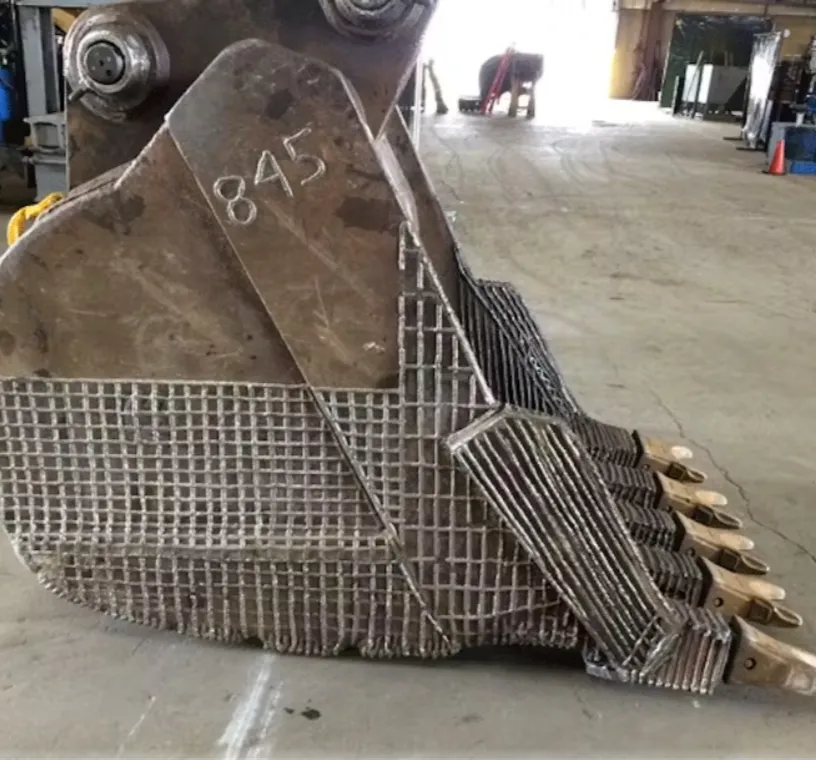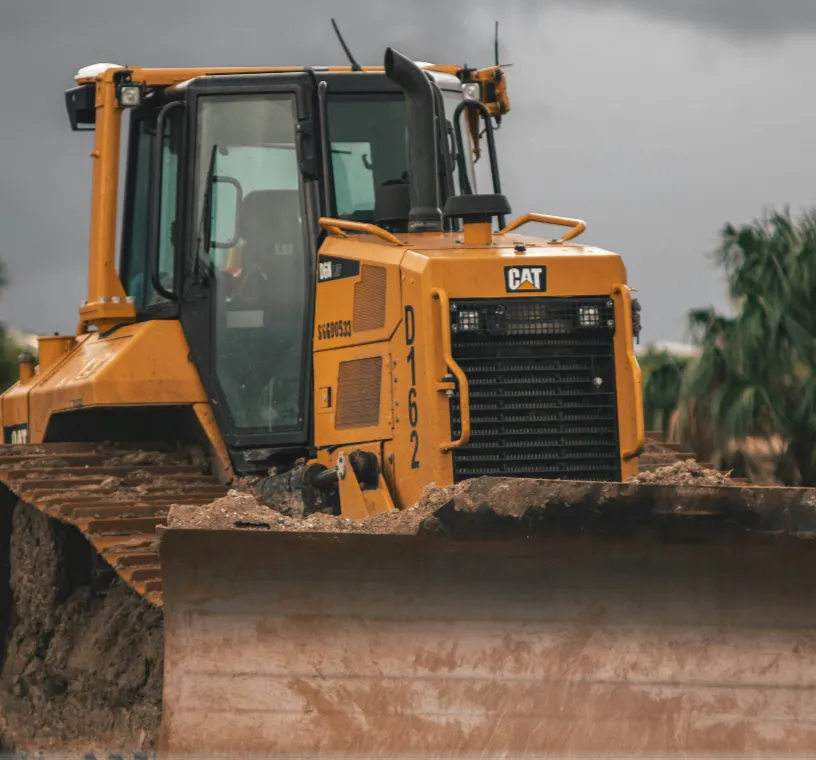Introduction
Hard facing, a process of applying a wear-resistant layer of material to equipment surfaces, is more than just a maintenance technique; it’s a strategic investment in the longevity and efficiency of your equipment. Especially for earthmoving machinery, which encounters a myriad of abrasive materials and challenging conditions, the benefits of hard facing are profound and multifaceted.
In this blog post, we delve into the tangible benefits of hard facing for your earthmoving equipment. From extending the life of your machinery to ensuring its peak performance, we’ll guide you through how this preventive measure is an essential component of your equipment’s maintenance plan. Join us as we explore why, in the world of earthmoving equipment, prevention is indeed better than repair.
Extended Equipment Life
The first and perhaps most significant benefit of hard facing in the earthmoving sector is the substantial extension of equipment life. Earthmoving machinery, by its very nature, is subject to some of the harshest working conditions. From bulldozers to excavators, these machines face relentless exposure to abrasive materials, which can rapidly wear down essential components.
Hard facing comes into play as a proactive solution to this challenge. By applying a hard, wear-resistant surface to the most vulnerable parts of the equipment, such as buckets, blades, and cutting edges, hard facing effectively shields these components from the direct impact and abrasion of daily operations. This protective layer acts as a barrier, absorbing the brunt of the wear, thus preserving the integrity of the underlying material.
The result is a significant extension in the life expectancy of the equipment. A bucket that might have needed replacement or major repair within a year of intense use, for example, can have its service life extended several times over with a proper hard facing application. This not only means fewer replacements over the lifetime of the equipment but also ensures that the machinery can operate at its full potential for longer, without the performance being hampered by worn parts.
In practice, hard facing can often restore parts to their original dimensions or even add to them, enhancing their durability. For an earthmoving business, this translates into a clear economic advantage. The longer intervals between replacements mean fewer interruptions, allowing projects to proceed on schedule and within budget.
Enhanced Wear Resistance
At the core of hard facing’s appeal for earthmoving equipment is its remarkable ability to resist wear. This isn’t just about making parts tougher; it’s about crafting a shield against the specific types of wear that these machines face: abrasion, impact, and erosion. Each of these wear types can drastically reduce the life of equipment parts, but with hard facing, their effects can be significantly mitigated.
Abrasion Resistance: Earthmoving equipment frequently comes into contact with a variety of abrasive materials like sand, gravel, and rocks. These materials can quickly wear down surfaces. Hard facing alloys, often rich in carbides such as chromium or tungsten, are used to create a surface that is much harder than the standard steel used in equipment manufacturing. This hard surface is more resistant to the grinding and scraping action of abrasive materials, keeping the machinery in service longer and maintaining efficiency.
Impact Resistance: Earthmoving equipment is not just exposed to abrasion, but also to heavy and repeated impacts. The hard facing materials designed for impact resistance are usually tougher rather than harder, able to absorb and dissipate energy without cracking. These materials are crucial for parts like hammer tips and crusher rolls, where the force of impact is a constant factor.
Erosion Resistance: Erosion, caused by the movement of fluids or particulate matter across a surface, can also be a challenge. Here, hard facing materials are chosen for their ability to withstand the constant ‘washing’ action that can gradually wear away surfaces. Alloys used for this purpose often have a balanced combination of hardness and toughness, providing a protective layer against erosion.
In hard facing, it’s not just the choice of material that matters, but also the application technique. Lemaro Engineering uses state-of-the-art welding techniques to ensure that the hard facing material bonds perfectly with the substrate, maintaining integrity even under extreme conditions. By choosing the right combination of alloy and application technique, we ensure that each piece of equipment is equipped to withstand the specific challenges it faces, maximising wear resistance and, by extension, the longevity and reliability of the machinery.
Cost Efficiency and Reduced Downtime
In the high-stakes world of earthmoving, where every minute of operation counts, the economic rationale for hard facing becomes abundantly clear. Cost efficiency and reduced downtime are not just benefits of this process; they are essential for maintaining a competitive edge in an industry where delays can be costly, and equipment reliability is non-negotiable.
Cost-Benefit Analysis of Hard Facing vs. Frequent Replacements: The initial cost of hard facing a component may be higher compared to standard repair or replacement. However, when viewed through the lens of long-term investment, the picture changes dramatically. Hard facing extends the life of equipment parts by multiples, leading to significantly fewer replacements over time. This reduction in the frequency of replacements not only saves direct costs in terms of parts but also cuts down on labour and associated operational costs. By investing a little more upfront in hard facing, earthmoving companies can achieve considerable savings in the long run.
Impact on Operational Efficiency: Downtime in earthmoving operations can be a major setback. When machines are out of action for repair or part replacements, projects can fall behind schedule, incurring extra costs and potentially damaging client relationships. Hard facing dramatically reduces the likelihood of unscheduled maintenance, keeping machines on the job for longer stretches. This reliability directly translates into operational efficiency, with projects more likely to be completed on time and within budget.
Preventive Maintenance as a Strategic Choice: Embracing hard facing is a strategic decision. It’s about adopting a proactive stance towards maintenance, rather than a reactive one. This approach not only saves money in the short term but also contributes to a more predictable maintenance schedule. With hard facing, maintenance becomes less of a surprise and more of a planned event, allowing for better resource allocation and project planning.
Conclusion
As we’ve journeyed through the multifaceted world of hard facing, it’s become evident that this process is not just a maintenance technique; it’s a strategic investment in the future of your earthmoving equipment. Lemaro Engineering, with its expertise in steel fabrication and hard facing, providestailored solutions for innovation and cost-efficiency.
The benefits of hard facing are clear and compelling. By extending equipment life, enhancing wear resistance, offering cost efficiency, reducing downtime, providing customized solutions, and enabling the restoration of older equipment, hard facing emerges as an indispensable tool in the arsenal of any earthmoving operation. It’s not just about repairing or protecting equipment; it’s about upgrading it to withstand the rigorous demands of the job, ensuring it performs better and lasts longer.
In closing, remember that in the world of earthmoving, prevention is indeed better than repair. Hard facing is more than just a defence against wear; it’s a strategic upgrade, a mark of foresight, and a testament to the dedication you have to the longevity and efficiency of your equipment.




